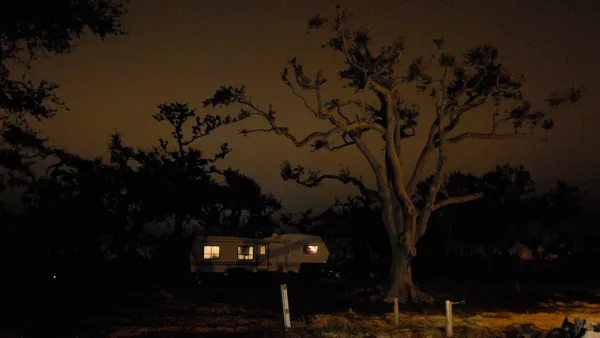When Andres Duany planned the village of Cornell, he built in walkability, density, and mixed-use. The outcome, however, falls short of the New Urbanist vision; driving is the norm and retail is scarce. What happened?
"It was with higher density in mind that the provincial government - which in the early '90s owned the land - approached Mr. Duany and his firm, Duany Plater-Zyberk, to develop Cornell on what was then greenfield.
Mr. Duany and his team got to work, preparing what he said was 'one of the best models' he had created. But a change of provincial government and a hand-off to a private firm called Law Development Group meant a change of plans and, while the blueprint had been completed, it was just shy of being coded into law. That form-based code would have ensured that everything from the segregation of land use to architectural aesthetics to the gridding of the streets would be carried out as planned.
'The tragic historical circumstance of the development changing hands is what has led Cornell to become what it has,' Mr. Duany said, adding that he did not have access to Law Development and, since being in a sense nudged off the project, has not been back to Cornell in more than five years. 'Most New Urbanism is done as a matter of law. In this instance, it's been a matter of persuasion.'"
FULL STORY: In Markham, the dream of an urban village that never was

National Parks Layoffs Will Cause Communities to Lose Billions
Thousands of essential park workers were laid off this week, just before the busy spring break season.

Retro-silient?: America’s First “Eco-burb,” The Woodlands Turns 50
A master-planned community north of Houston offers lessons on green infrastructure and resilient design, but falls short of its founder’s lofty affordability and walkability goals.

Delivering for America Plan Will Downgrade Mail Service in at Least 49.5 Percent of Zip Codes
Republican and Democrat lawmakers criticize the plan for its disproportionate negative impact on rural communities.

Test News Post 1
This is a summary

Test News Headline 46
Test for the image on the front page.

Balancing Bombs and Butterflies: How the National Guard Protects a Rare Species
The National Guard at Fort Indiantown Gap uses GIS technology and land management strategies to balance military training with conservation efforts, ensuring the survival of the rare eastern regal fritillary butterfly.
Urban Design for Planners 1: Software Tools
This six-course series explores essential urban design concepts using open source software and equips planners with the tools they need to participate fully in the urban design process.
Planning for Universal Design
Learn the tools for implementing Universal Design in planning regulations.
EMC Planning Group, Inc.
Planetizen
Planetizen
Mpact (formerly Rail~Volution)
Great Falls Development Authority, Inc.
HUDs Office of Policy Development and Research
NYU Wagner Graduate School of Public Service




























